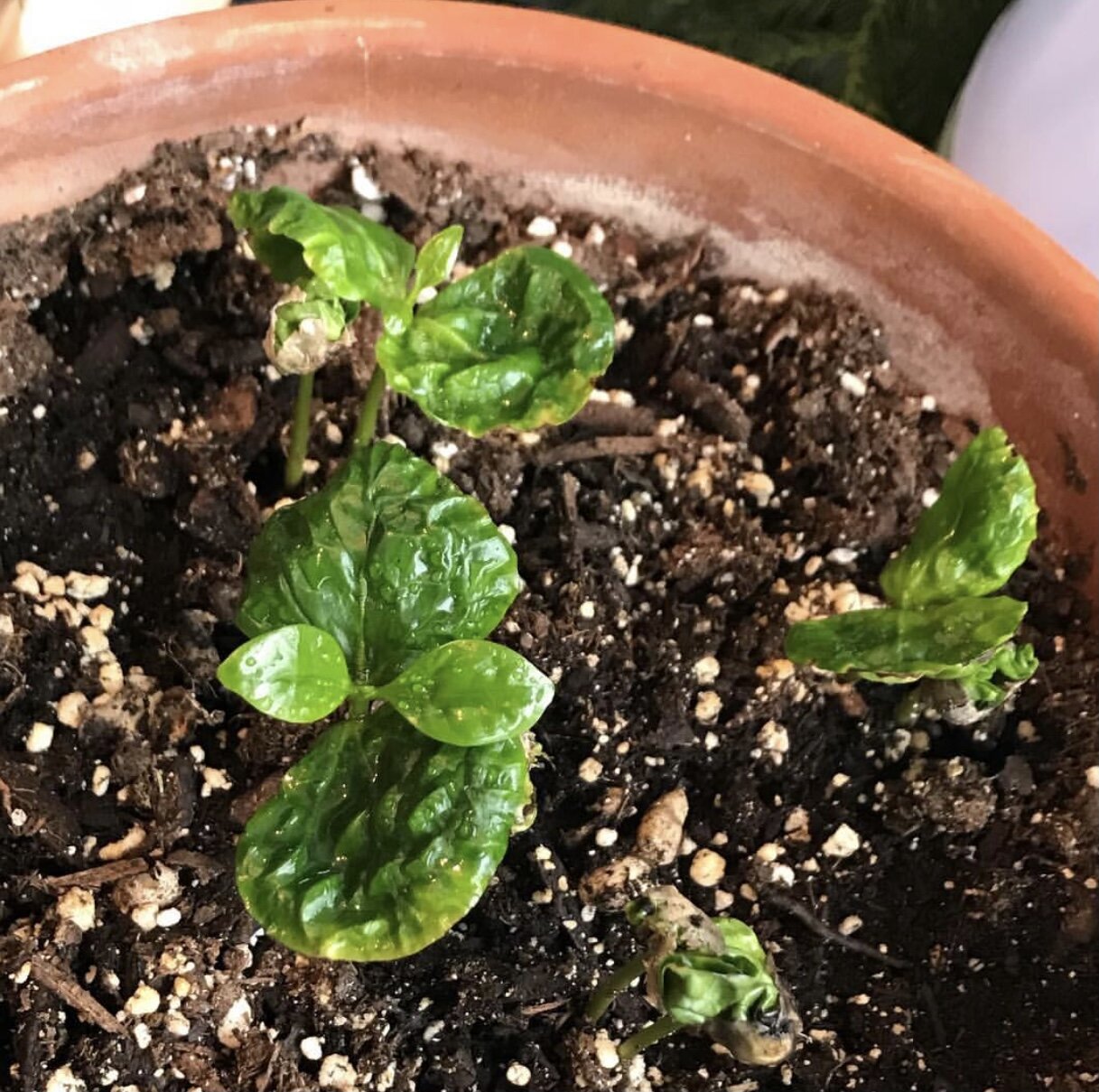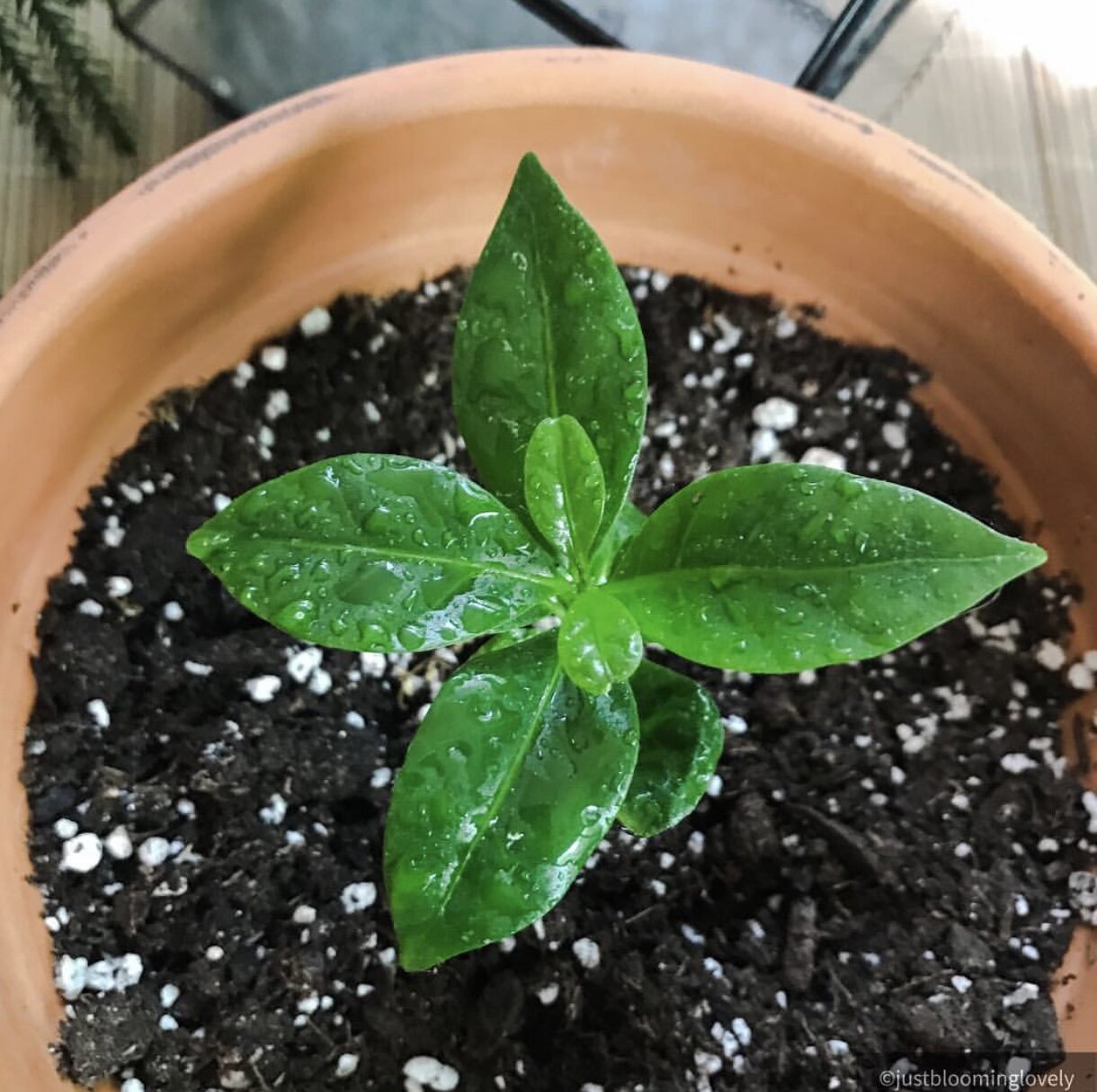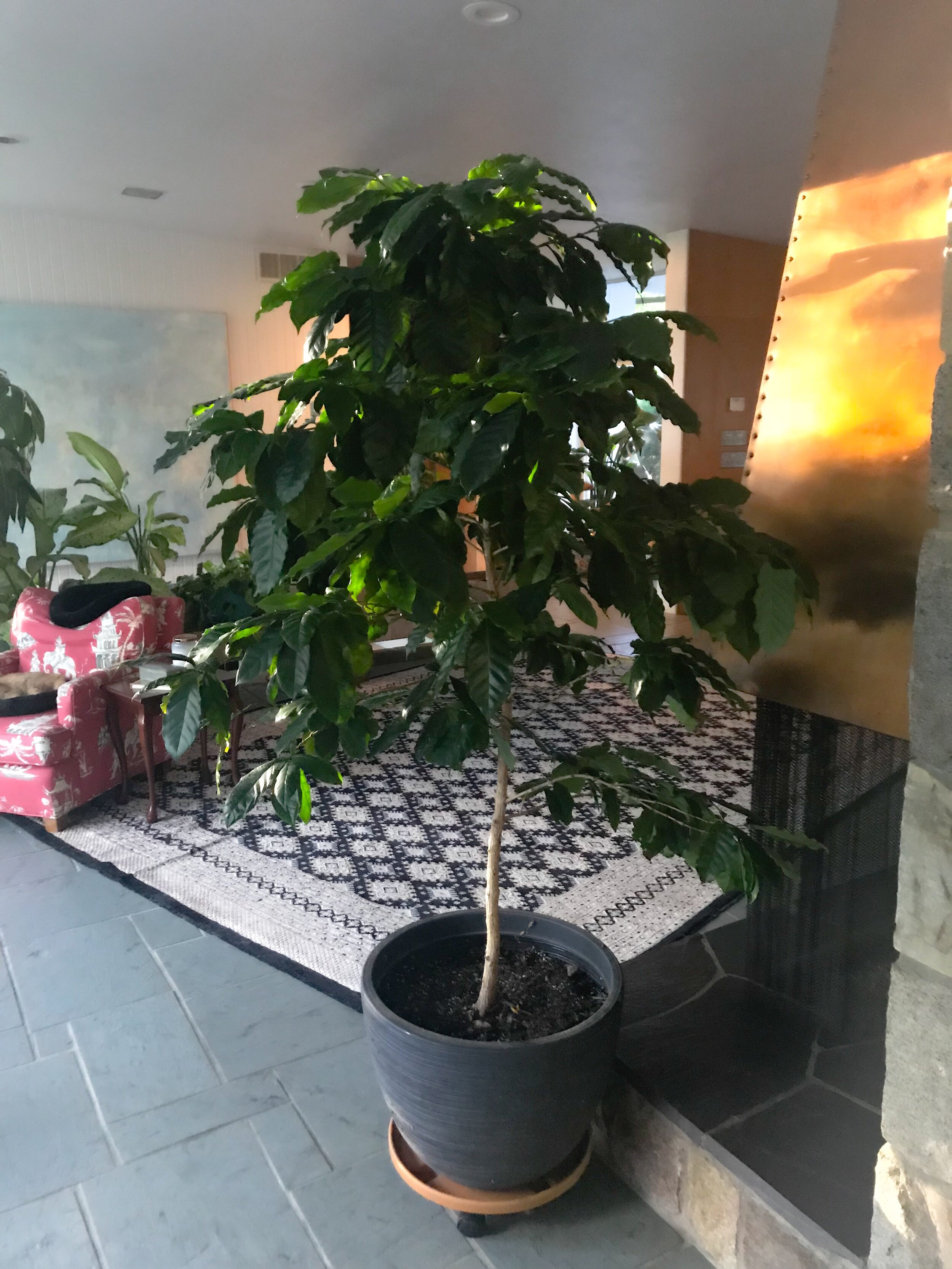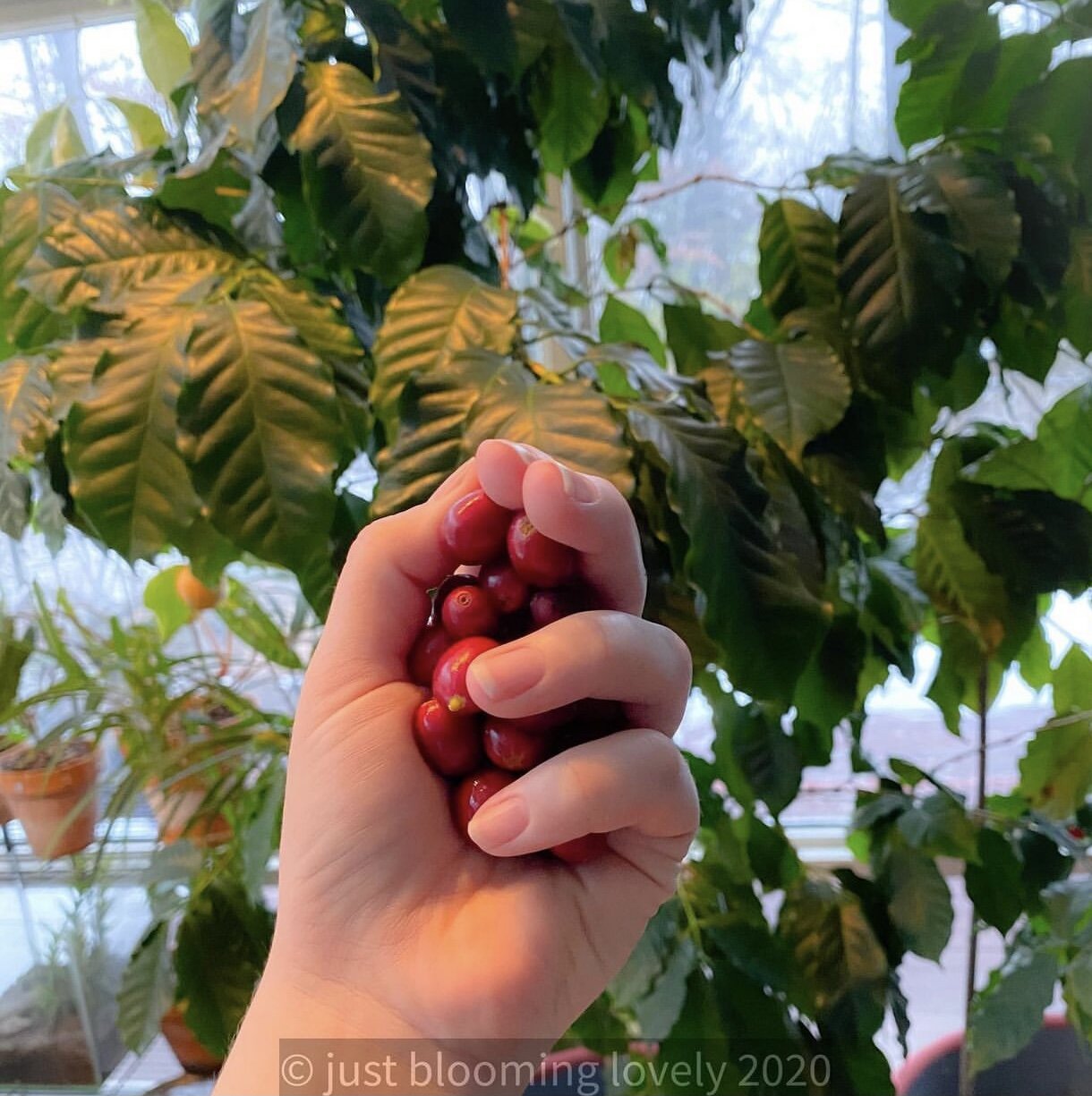Coffee Break with HPH: How to Care for Coffee Trees
Today we’re taking an updated look at the care for coffee trees as houseplants. With their lush, glossy leaves coffee trees make a brilliant statement in a home. They’re also relatively easy to care for, once a few basic needs are met. If you need individualized tips and advice on your coffee tree, be sure to join us on Mesh Communities or in our Facebook group. Now, on to the coffee care….
There are many different coffee species in the family Rubicae that are divided into two main groupings, Coffea arabica and Coffea canephora. Arabica coffee trees produce around 80% of the world’s coffee and are the most commonly found as houseplants. When you buy a commercially grown “coffee plant” you’re usually getting multiple seedlings grown together in one pot. If you want to have thriving coffee trees, it’s necessary to gently separate them and give them their own pots. The coffee tree (or shrub, depending on who you ask) can grow up to 10-12 feet tall.
Potting Mix
First, choose a pot with adequate drainage. For larger trees I use lightweight plastic pots which makes it super simple to drill in extra holes with a spade bit. Then it’s time to whip up a batch of custom potting mix. Coffee trees enjoy a well-draining mix on the slightly acidic side of the pH Spectrum. I use organic potting soil, orchid bark, horticultural charcoal, perlite, and peat moss and the trees seem to enjoy it. For extra light and fluffy, better drainage, and less risk of compaction, use less soil and more bark, charcoal, and perlite.
Watering & Humidity
Coffee trees like to stay moist, but not soaking. A thorough watering once a week tends to work for me; however your watering schedule may differ depending on a lot of factors. Take into account the temperature and humidity inside your home, as well as the type of pot, and the amount of light. A water meter and a hygrometer can be a big help in getting a handle on when to water. If you don’t have those, coffee trees will tell you when they’re thirsty by getting droopy leaves. Adjust your watering to give them a boost before they start drooping!
Coffee loves humidity — it naturally grows best in tropical regions. If your home tends to be on the dry side, you may want to invest in a humidifier. It can make all the difference for coffee and other tropicals during hot, dry periods or if you’re running heat over the winter.
Light & Temperature
Bright indirect light is perfect for your coffee trees. Indoors they can be placed near south or west-facing windows to soak up the sun. If the light is too intense, move them back a little or try out a sheer curtain. Outside, they prefer to be in dappled shade as direct sun on their leaves may cause them to scorch.
Try to find a spot that isn’t in the direct path of heating or air conditioning vents, or windows and doors that are in frequent use, since blasts of hot or cold air do not make for happy plants. Otherwise, coffee trees tolerate normal household temperature ranges. If your house gets particularly cold in the winters, however, keep an eye on them — they don’t tolerate cold conditions.
Fertilizing & Pruning
You can use any well-balanced indoor plant fertilizer during the growing season (spring and summer), but I’ve recently found that my coffee trees respond really well to citrus fertilizer. I also supplement them occasionally with chelated iron to help prevent chlorosis due to iron deficiency.
With the right potting medium and care, you may find your tree starts outgrowing your space! Thankfully they are resilient and can be easily pruned and shaped with sharp, clean shears.
Now for the big question: Will you ever get to produce your own homegrown coffee with an indoor coffee tree? The answer is yes, it’s definitely possible! Coffee trees take somewhere between three to seven years to mature enough to produce fruit, known as coffee cherries. Most sources say three to five years is standard, but in my experience it might take a little longer with indoor trees. Mine tend to flower and fruit more consistently if they are placed outside during the summer, but that’s not necessary for the process.
Once your trees are producing and you’ve harvested your coffee cherries, what’s next? Keep an eye out for a special guest post on how to roast your own homegrown coffee!









